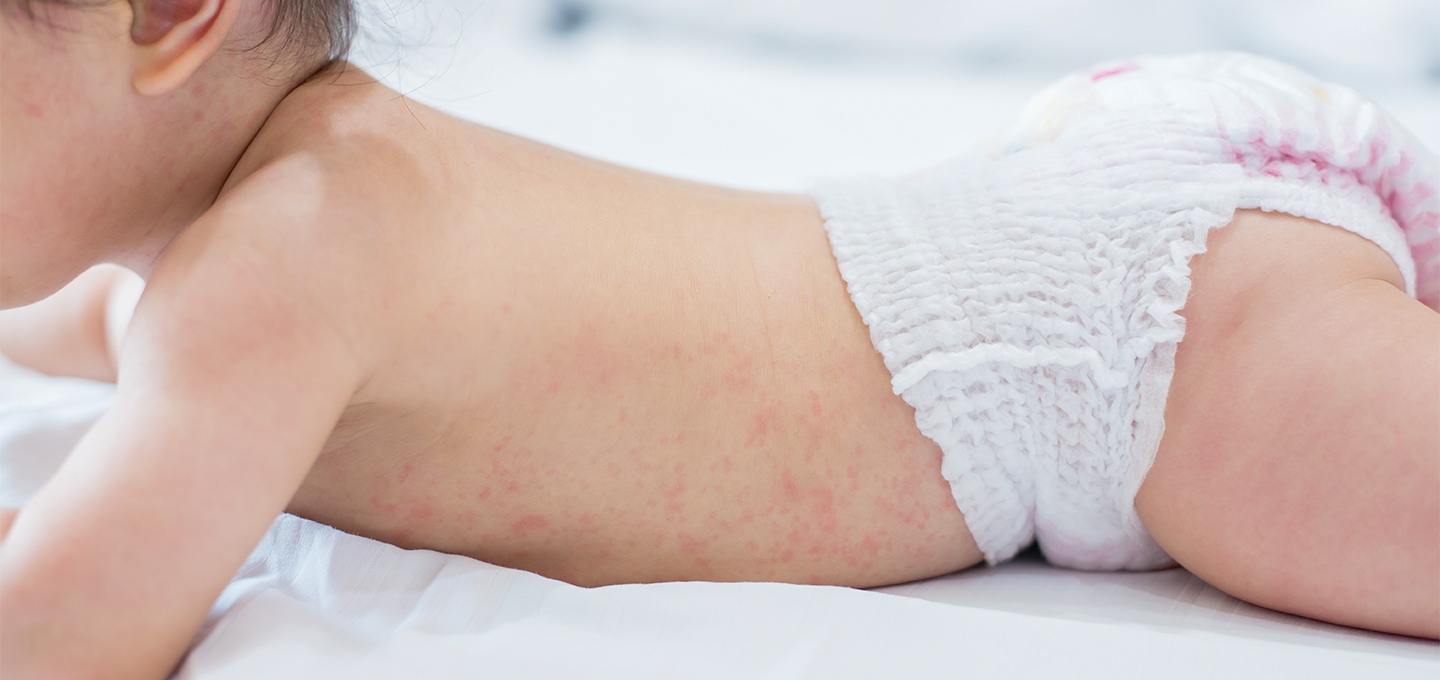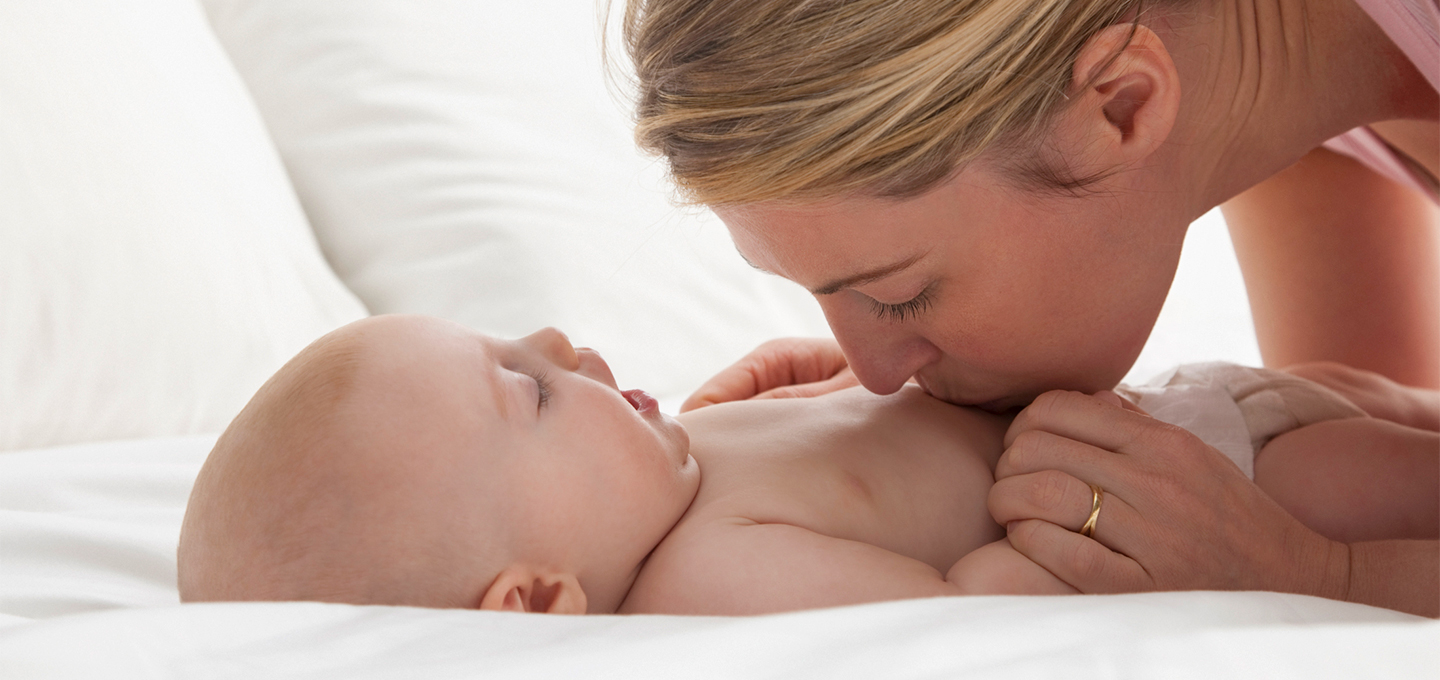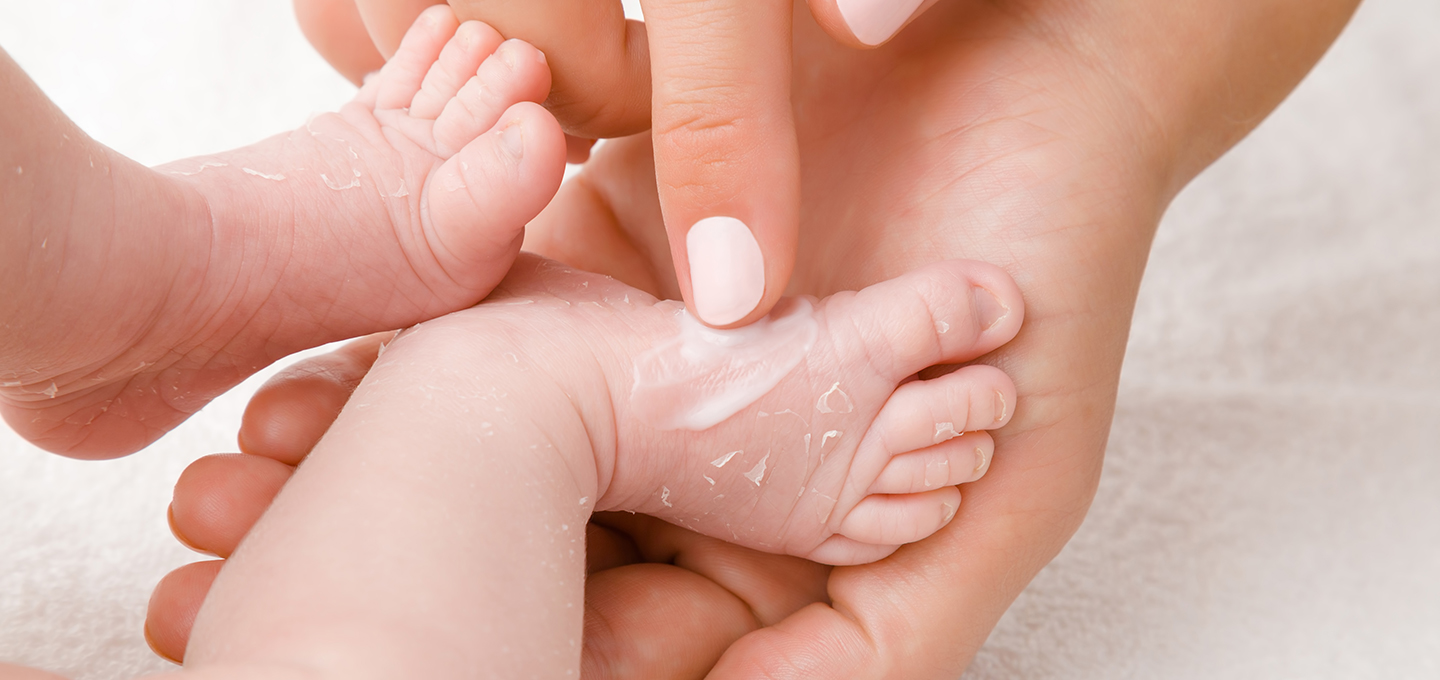
Ringworm in Babies and Toddlers


You've probably heard of ringworm before. Despite the name, ringworm has nothing to do with worms. Instead, the name comes from the ring-shaped rash caused by a fungal infection. Read on to learn what ringworm is, the treatments available, and how you can help prevent your baby or toddler from getting ringworm in the first place.
What Is Ringworm?
Ringworm is a common fungal skin infection that's pretty contagious and can happen to anyone—not just kids. The fungus can spread through people, animals, and contaminated items. So, for example, if someone uses the clothing, bed linens, or towel of a person who has ringworm, they could catch the infection.
You might be more familiar with ringworm than you think, since it's the same fungus that causes jock itch ( tinea cruris ) and athlete's foot ( tinea pedis ). Basically, when the fungus grows in the groin area, it's called jock itch; when it grows on the feet, it's called athlete's foot; and when it shows up anywhere else on the body, it's called ringworm.
The medical name of a fungal skin infection begins with tinea and is followed by a word referring to the infection's location. For example, tinea capitis means infections of the scalp, and tinea corporis means infections of the body.
In Summary
Ringworm is a fungal skin infection that can happen to anyone, not just babies. Athlete's foot and jock itch are common forms of ringworm.
How Do Babies and Toddlers Get Ringworm?
Babies and toddlers can get ringworm in three different ways:
By knowing how this infection spreads, you can take steps to prevent ringworm in babies.
What Does Ringworm Look Like on Your Baby or Toddler?
Ringworm causes red, scaly, circular patches with raised edges. As the rash grows, the patches might become smoother in the center. The rash can appear on your child's scalp or anywhere else on their body. Multiple ring-shaped patches can develop if the infection isn't treated.
Here's how the rash develops when symptoms appear, usually 4 to 14 days after the initial infection:
Keep in mind that hair might be lost in the affected area, especially if the ringworm rash is on your baby's scalp. In some severe cases, the infection can cause scarring and permanent hair loss.
It can be easy to confuse some types of ringworm with dandruff, eczema, cradle cap, or another skin condition. Cradle cap only happens in infancy, so if your child is over 1 year old, the rash is unlikely to be cradle cap and is more likely to be ringworm or something else. Your child's healthcare provider will be able to make a diagnosis if you're unsure what's causing the red, scaly patches on your little one's skin. Since ringworm in infants can resemble other skin conditions, professional diagnosis is important.
In Summary
Typical signs of ringworm in babies are red, scaly patches in roundish shapes on the skin.
Ringworm Treatment for Babies and Toddlers
Your healthcare provider may recommend an over-the-counter cream, such as clotrimazole, tolnaftate, or miconazole, to treat your baby's ringworm.
Usually, you need to apply this medication two to three times a day for at least a week before the ringworm starts to clear up. Read the instructions on the product label and talk to the pharmacist or your healthcare provider if you have any questions.
If the over-the-counter cream doesn't work, your child's provider may prescribe a stronger oral antifungal medication. Tinea capitis (ringworm on the scalp) usually needs to be treated with oral antifungal medication, and sometimes a special shampoo may be recommended. Be sure to use the medication as directed and for as long as it's recommended to ensure your baby's ringworm clears up entirely.
Other family members might also need treatment. While the infection is still around in your home, make sure items like combs, hats, and towels aren't shared to prevent ringworm from spreading (or coming back).
In Summary
Ringworm can be treated with over-the-counter antifungal creams, or your baby's healthcare provider may prescribe an oral medication. If the ringworm is on your baby's scalp, the provider might recommend a special shampoo.
How Can Ringworm Be Prevented?
Ringworm can be prevented with some simple steps, including:
It may be a good idea to keep your child home from daycare or preschool to prevent spreading ringworm to others. Check with the daycare center or preschool about their policy regarding an infection like ringworm, or ask your child's healthcare provider for personalized advice. Following these preventive measures can help protect your baby and other family members from infections like ringworm.
In Summary
Ringworm can be prevented with proper hygiene, including keeping your baby's skin dry, always using clean towels, avoiding sharing personal items like combs, laundering clothing regularly, and avoiding tight clothes, which helps prevent ringworm on babies.
The Bottom Line
Ringworm is totally treatable. It's best to catch it early before it spreads to other parts of your baby's body or to another family member. Over-the-counter meds or medications prescribed by your child's healthcare provider can help get rid of the fungus. Effective treatment ensures that ringworm in infants is quickly taken care of.
The key to preventing your baby or another family member from getting or spreading ringworm is to make sure that clothes, towels, and bed linens aren't shared, and that towels and clothes are washed regularly.
If you suspect your pet has ringworm, take it to the veterinarian immediately, and be sure to wash your hands after contact.
Ringworm infection can be contained with the right precautions. With some TLC and effective treatment, your baby or toddler will heal from this infection and have clear skin again.
Read more about Baby
Related Articles
Join a World of Support
through Pregnancy and Parenthood.
TRACK WITH TOOLS
LEARN WITH EXPERTS
GET REWARDED








